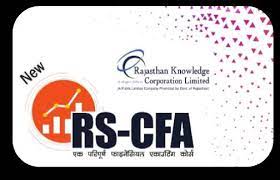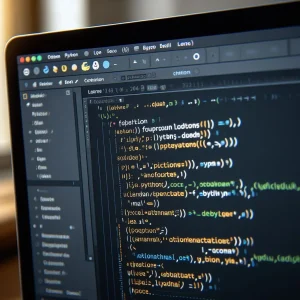Web Development_Django
₹10,000.00
Our small, flexible, agile and design-led structures and processes allow us to be highly responsive and innovative. We’re made of passionate leaders, strategists, managers.
Description
| COURSE INTRODUCTION Django is a powerful open source framework that was released initially in 2005. Factors such as simplicity, reliability, and scalability have largely contributed to its growth over the past years. For these reasons, it has evolved to be one of the go-to options for developers and businesses worldwide. In this course, one will learn about Django which is a high-level Python web framework that encourages rapid web application development
|
|||||||
| S.No | Chapter/Topic | ||||||
| 1. Web Development Introduction | |||||||
| a. Terms used in Web Development | |||||||
| b. Server/Client | |||||||
| c. Web Server/Web Client | |||||||
| d. Static and dynamic Web Page | |||||||
| e. Web Site | |||||||
| f. Web Developer | |||||||
| g. Protocols | |||||||
| h. TCP/IP | |||||||
| i. Http | |||||||
| j. URL | |||||||
| 2. HTML | |||||||
| a. HTML Introduction | |||||||
| b. HTML Versions | |||||||
| c. Structure of a HTML program(html, head, body, title) | |||||||
| d. Editors used to write HTML programs | |||||||
| e. HTML Basic Elements(b, i, u, br, strong, small, big, center, tt, strike, s, code, var, kbd, samp, em, cite, ins, del, blockquote, q, dfn, sub, sup, address) | |||||||
| f. HTML Heading Tags(h1, h2, h3, h4, h5, h6) | |||||||
| g. HTML Attributes | |||||||
| h. HTML Colors | |||||||
| i. HTML Colornames | |||||||
| j. HTML Colorvalues | |||||||
| k. HTML Paragraph Tag (p) | |||||||
| l. HTML Block Tags | |||||||
| m. HTML Inline Tags | |||||||
| n. HTML Formatting Changing Fonts (font) | |||||||
| o. HTML Some More Tags with attributes (bdo, hr, abbr, acronym) | |||||||
| p. HTML Comments | |||||||
| q. HTML Special Entities | |||||||
| r. HTML EMOJIS | |||||||
| s. HTML List tags (ol, ul, li, dl, dt, dd, Menu, dir) | |||||||
| t. HTML Images (img) | |||||||
| u. HTML Tables (table, tr, th, tb, thead, tbody, tfoot, col, colgroup, caption) | |||||||
| v. HTML Frames (frameset, frame, noframes) | |||||||
| w. HTML Hyperlinks and bookmarks (a) | |||||||
| x. HTML Div and Span Tags (div, span) | |||||||
| y. HTML Styles (style) | |||||||
| z. HTML Script Tag (script, noscript, link) | |||||||
| aa. HTML Marquee Tag (marquee) | |||||||
| bb. HTML URL Encode | |||||||
| cc. HTML Form Tags (form, input, textarea, button, select, option, optgroup, fieldset, legend, label) | |||||||
| dd. HTML Input Types | |||||||
| ee. HTML Form Elements | |||||||
| ff. HTML Form Attributes | |||||||
| gg. HTML IFrame (Iframe) | |||||||
| hh. HTML Area and Map (area, map) | |||||||
| ii. HTML 5 Intro | |||||||
| jj. HTML 5 New Elements | |||||||
| kk. HTML 5 Audio Tag (audio) | |||||||
| ll. HTML 5 Video Tag (video) | |||||||
| mm. HTML 5 Semantics Elements (header, section, nav, article, aside, footer, main,summary, details, figcaption, figure, mark, time) Miscellaneous Tags (base, basefont, pre, param, !Doctype, meta, object, applet, progress, embed, data, datalist, bdi, dialog, meter, output, rp, rt, ruby, source, track, wdr, picture, template) | |||||||
| nn. HTML5 Canvas | |||||||
| oo. HTML5 SVG (svg) | |||||||
| pp. Common Attributes | |||||||
| 3. CSS | |||||||
| a. CSS Introduction | |||||||
| b. CSS Syntax | |||||||
| c. CSS Selectors | |||||||
| d. CSS Inline | |||||||
| e. CSS Internal | |||||||
| f. CSS External | |||||||
| g. CSS Id | |||||||
| h. CSS Class | |||||||
| i. CSS Multiple Style Sheet | |||||||
| j. CSS Grouping | |||||||
| k. CSS Nesting | |||||||
| l. CSS on form elements | |||||||
| m. CSS Display property | |||||||
| n. CSS Visibility property | |||||||
| o. CSS Backgrounds | |||||||
| p. CSS Gradients | |||||||
| q. CSS Box Model | |||||||
| r. CSS Text | |||||||
| s. CSS Fonts | |||||||
| t. CSS Links | |||||||
| u. CSS Lists | |||||||
| v. CSS Tables | |||||||
| w. CSS Positioning | |||||||
| x. CSS Float | |||||||
| y. CSS Attribute Selector | |||||||
| z. CSS Combinators | |||||||
| aa. CSS Icons | |||||||
| bb. CSS Opacity | |||||||
| cc. CSS Overflow | |||||||
| dd. CSS Pseudo Class | |||||||
| ee. CSS Elements | |||||||
| ff. CSS Units | |||||||
| gg. CSS Shortcut Icon | |||||||
| hh. CSS Transform | |||||||
| ii. CSS Transition | |||||||
| jj. CSS Animation | |||||||
| kk. CSS Z-Index | |||||||
| ll. CSS Menu | |||||||
| mm. CSS Sub-Menu | |||||||
| nn. CSS Units | |||||||
| oo. CSS Text Effects | |||||||
| pp. CSS Navigation Bar | |||||||
| qq. Dropdowns | |||||||
| rr. Website Layout | |||||||
| 4. Responsive | |||||||
| a. Media Queries | |||||||
| b. Meta tag | |||||||
| 5. Java Script | |||||||
| a. Introduction | |||||||
| b. What is JavaScript | |||||||
| c. Output using Write | |||||||
| d. Syntax | |||||||
| e. Comments | |||||||
| f. Java Script in Head or Body | |||||||
| g. External Javascript | |||||||
| h. Variables | |||||||
| i. Operators | |||||||
| j. Arithmetic | |||||||
| k. Assignment | |||||||
| l. Data Types | |||||||
| m. Functions | |||||||
| n. Condition | |||||||
| o. Looping | |||||||
| p. Array | |||||||
| q. BOM Window Object | |||||||
| r. Alert Box | |||||||
| s. Confirm Box | |||||||
| t. Prompt Box | |||||||
| u. setTimeout and setInterval | |||||||
| v. DOM document object | |||||||
| w. getElementById | |||||||
| x. getElementsByClassName | |||||||
| y. getElementsByName | |||||||
| z. getElementsByTagName | |||||||
| aa. history object | |||||||
| bb. location object | |||||||
| cc. screen object | |||||||
| dd. navigator object | |||||||
| ee. Events | |||||||
| ff. String class | |||||||
| gg. Date class | |||||||
| hh. Math class | |||||||
| ii. Number class | |||||||
| jj. Boolean class | |||||||
| kk. Validation | |||||||
| ll. Objects | |||||||
| mm. Cookies | |||||||
| nn. this Keyword | |||||||
| 6. BootStrap | |||||||
| a. Bootstrap 4 | |||||||
| b. Introduction | |||||||
| c. Download or CDN | |||||||
| d. Container | |||||||
| e. Container-fluid | |||||||
| f. Jumbotron | |||||||
| g. Jumbotron-fluid | |||||||
| h. Grid System | |||||||
| i. Grid XSmall | |||||||
| j. Grid Small | |||||||
| k. Grid Medium | |||||||
| l. Grid Large | |||||||
| m. Grid XLarge | |||||||
| n. Colors | |||||||
| o. Tables | |||||||
| p. Images | |||||||
| q. Well | |||||||
| r. Alerts | |||||||
| s. Buttons | |||||||
| t. Button Groups | |||||||
| u. Badges | |||||||
| v. Navbar | |||||||
| w. Pagination | |||||||
| x. Dropdowns | |||||||
| y. Collapse | |||||||
| z. Forms | |||||||
| aa. Progress Bars | |||||||
| bb. Spinners | |||||||
| cc. Pagination | |||||||
| dd. List Groups | |||||||
| ee. Cards | |||||||
| ff. Inputs | |||||||
| gg. Input Groups | |||||||
| hh. Custom Forms | |||||||
| ii. Carousel | |||||||
| jj. Modal | |||||||
| kk. Tooltip | |||||||
| ll. Popover | |||||||
| mm. Toast | |||||||
| nn. Scrollspy | |||||||
| oo. Utilities | |||||||
| pp. Flex | |||||||
| qq. Icons | |||||||
| rr. Media Objects | |||||||
| ss. Filters | |||||||
| 7. JQuery | |||||||
| a. Introduction | |||||||
| b. Installation | |||||||
| c. Syntax | |||||||
| d. Selectors | |||||||
| e. Events | |||||||
| f. Effects | |||||||
| g. Hide/Show | |||||||
| h. Fade | |||||||
| i. Slide | |||||||
| j. Animate | |||||||
| k. stop() | |||||||
| l. Callback | |||||||
| m. Chaining | |||||||
| n. Get | |||||||
| o. Set | |||||||
| p. Add | |||||||
| q. Remove | |||||||
| r. CSS classes | |||||||
| s. Traversing | |||||||
| t. Ancestors | |||||||
| u. Descendants | |||||||
| v. Siblings | |||||||
| w. Filtering | |||||||
| x. Facebook Apps | |||||||
| y. Google Map | |||||||
| z. Static Website Project | |||||||
| 8. Introduction to Django | |||||||
| a. Features of Django | |||||||
| b. Django web server | |||||||
| c. Understanding Django Environment | |||||||
| d. A simple ‘Hello World’ Application | |||||||
| 9. A project for Displaying hyperlinks | |||||||
| a. Django Architecture | |||||||
| b. MVC and MTV | |||||||
| c. Starting a project | |||||||
| d. Django Apps | |||||||
| e. Activating our first app | |||||||
| f. A view that displays a hyperlink | |||||||
| g. Mapping the views to URLs | |||||||
| h. Running your first app | |||||||
| i. Improving the views using templates | |||||||
| j. Template inheritance | |||||||
| k. Sending data from url to view | |||||||
| l. Sending data from view to template | |||||||
| 10. A Project for Creating website | |||||||
| a. Starting a project | |||||||
| b. Creating an app inside the project | |||||||
| c. Activating the app | |||||||
| d. Creating model for our site | |||||||
| e. Converting Model into Table | |||||||
| f. Basic data access using Django Shell | |||||||
| g. Saving objects into Database | |||||||
| h. Retrieving objects from database | |||||||
| i. Modifying objects of database | |||||||
| j. Sorting objects | |||||||
| k. Filtering objects | |||||||
| l. Deleting objects | |||||||
| m. Making changes in the data model | |||||||
| 11. Creating Administration Panel | |||||||
| a. Using admin interface | |||||||
| b. Customizing the admin interface | |||||||
| c. Adding users | |||||||
| d. Data access and modification using admin panel | |||||||
| e. Giving permission to users | |||||||
| 12. Django Template | |||||||
| a. About Templates | |||||||
| b. Template Fundamentals | |||||||
| c. Creating Template Objects | |||||||
| d. Loading Template Files | |||||||
| e. Filling in Template Content(Context Objects) | |||||||
| f. Template Filters | |||||||
| g. Template Tags | |||||||
| h. More on For Loops | |||||||
| i. Template Inheritance | |||||||
| j. Easy Rendering of Templates | |||||||
| k. RequestContext Processors | |||||||
| l. Global Context Processors | |||||||
| 13. Django Form | |||||||
| a. The Forms Module | |||||||
| b. Creating the Form | |||||||
| c. Generating Output From the Form | |||||||
| d. Customizing Field Parameters | |||||||
| e. Processing Form Data | |||||||
| f. Custom Form Field Validation | |||||||
| g. Generating Custom Field Errors | |||||||
| h. Customizing Form Output | |||||||
| 14. Database Models with Django | |||||||
| a. About Database Models | |||||||
| b. Configuring Django for Database Access | |||||||
| c. Understanding Django Apps | |||||||
| d. About Django Models | |||||||
| e. Defining Django Models | |||||||
| f. Understanding Model Fields & Options | |||||||
| g. Table Naming Conventions | |||||||
| h. Creating A Django Model | |||||||
| i. Adding the App to Your Project | |||||||
| j. Validating the App | |||||||
| k. Generating & Reviewing the SQL | |||||||
| l. Adding Data to the Model | |||||||
| m. Primary Keys and the Model | |||||||
| n. Simple Data Retrieval Using a Model | |||||||
| o. Understanding QuerySets | |||||||
| p. Applying Filters | |||||||
| q. Specifying Field Lookups | |||||||
| r. Lookup Types | |||||||
| s. Slicing QuerySets | |||||||
| t. Specifying Ordering in QuerySets | |||||||
| 15. Django ORM | |||||||
| a. ORM Configuration | |||||||
| b. Mapper Configuration | |||||||
| c. Relationship Configuration | |||||||
| d. Inheritance Mapping | |||||||
| e. Advanced Collection Configuration | |||||||
| f. Configuration Extensions | |||||||
| g. Declarative Extension | |||||||
| h. Association Proxy | |||||||
| i. Hybrid Attrbutes | |||||||
| j. Mutable Scalars | |||||||
| k. Ordered List | |||||||
| l. ORM Usage: Session Usage and Guidelines | |||||||
| m. Query API reference | |||||||
| n. Relationship Loading Techniques | |||||||
| o. Using Q Objects | |||||||
| p. Creating Forms from Models | |||||||
| 16. Access Control with Sessions and Users | |||||||
| a. Cookies & Django | |||||||
| b. The Django Session Framework | |||||||
| c. Sessions in Views | |||||||
| d. Session Tuning | |||||||
| e. Installing Django User Authentication | |||||||
| f. Using Authentication in Views | |||||||
| g. Login and Logout | |||||||
| h. Building your Own Login/Logout Views | |||||||
| i. Authentication Decorators | |||||||
| j. Adding & Deactivating Users | |||||||
| k. Asynchronous Messaging | |||||||
| l. Managing Permissions | |||||||
| 17. Generic View | |||||||
| a. Simple Generic Views | |||||||
| b. Using Generic Redirects | |||||||
| c. Other Generic Views | |||||||
| d. Create/Update/Delete Generic views | |||||||
| 18. Data Caching for Performance | |||||||
| a. Data Caching | |||||||
| b. Setting up Per-View Caching | |||||||
| c. Site Caching | |||||||
| 19. Preventing Cross Site Request Forgery | |||||||
| a. Cross Site Request Forgery | |||||||
| 20. Django’s Email Functionality | |||||||
| a. Configuring Mail Settings | |||||||
| b. Sending Email | |||||||
| c. Other Email Functions | |||||||
| 21. Live Project Implementation | |||||||
| a. Project Life Cycle | |||||||
| b. Creating a functional website in Django | |||||||
Additional information
| color | Gray |
|---|


















Reviews
There are no reviews yet.